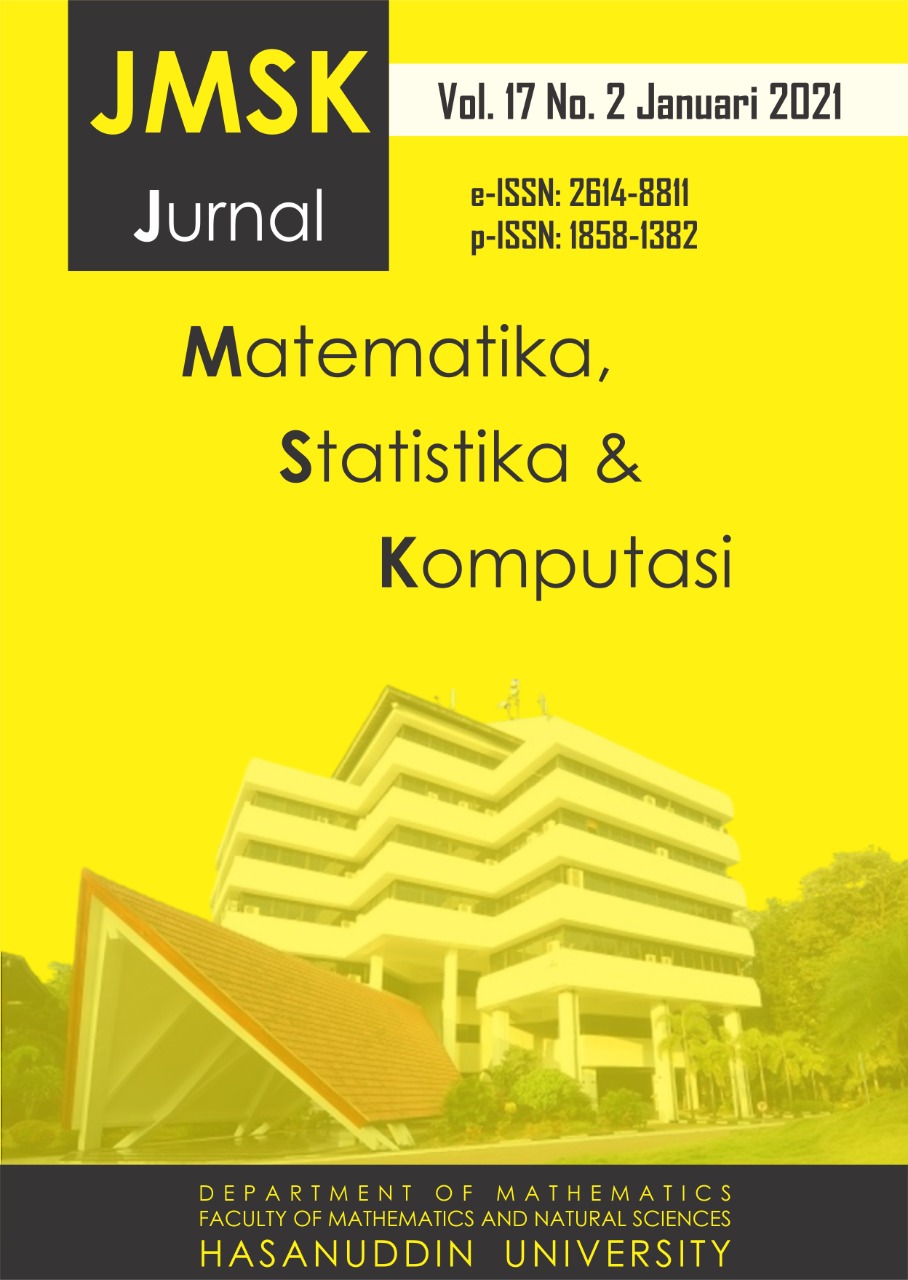Stability Analysis of Divorce Dynamics Models
DOI:
https://doi.org/10.20956/jmsk.v17i2.11984Keywords:
Divorce Dynamics, Mathematical Model, Equilibrium Point, Stability Analysis, Pontryagin Minimum Principle, Forward-Backward Sweep Method, Optimal ControlAbstract
This article examines the mathematical model of divorce. This model consists of four population classes, namely the Married class (M), the population class who experiences separation of separated beds (S), the population class who is divorced by Divorce (D), and the population class who experiences depression or stress due to divorce Hardship (H). This study focuses on the stability analysis of divorce-free and endemic equilibrium points. Local stability was analyzed using linearization and eigenvalues methods. In addition, the basic reproduction number is provided via the next generation matrix method. The existence and stability of the equilibrium point are determined from . The results showed that the rate of interaction between population M and populations other than H is very influential on efforts to minimize divorce. Divorce can be minimized when the transmission rate is reduced to . Reducing the transmission rate and increasing the rate of transfer from split bed class to married class can turn divorce endemic cases into non-endemic cases. A numerical simulation is given to confirm the analysis results.
References
Achmad, Djumairi. S.H. 1990. Hukum Perdata II. Semarang: Dosen Fakultas Syari’ah IAIN Walisongo.
Boyce, W. E. & DiPrima, R. C., 2012. Elementary Differential Equations. 10th Edition penyunt. United States: John Wiley & Sons.
Braun, M. (1983). Differential Equations and Their Applications. Springer Verlag, New York.
Driessche and Watmough. (2002). Reproduction numbers and sub-threshold endemic equilibria for compartmental models of disease transmission. Mathematical Biosciences.
Finizio, dan Ladas. (1988). Persamaan Diferensial Biasa dengan penerapan Modern. Erlangga: Jakarta
Gambrah PP, Abdul-Samad A, Adzadu Y. (2018). Divorce Transmission Model International Journal of Statistics and Applied Mathematics.
Gambrah PP, Adzadu Y. (2018). Mathematical model of divorce epidemic in Ghana International Journal of Statistics and Applied Mathematics.
H Hartati, S Toaha and Kasbawati (2019) Stability analysis of SEISEIR-SEI modelling on the dynamics of spread dengue fever with vaccination and insecticide J. Phys.: Conf. Ser. 1341 062033. doi:10.1088/1742-6596/1341/6/062033
Hale, J. K. & Kocak , H., 1991. Dynamics and Bifurcations. New York: Springer-Verlag.
Lenhart, S. & Workman, J. T., 2007. Optimal Control Applied to Biological Models. London: Taylor & Francis Group.
S Toaha, J Kusuma, Khaeruddin and Mawardi 2014 Stability analysis and optimal harvesting policy of prey-predator model with stage structure for predator Applied Mathematical Sciences 8(159) 7923-7934
Toaha, S. (2013). Pemodelan Matematika dalam Dinamika Populasi. Makassar: Dua Satu Press.
Toni, B. (2014). Kontrol Optimum Prinsip Minimum Pontryagin. Departemen Matematika IPB.
Undang-Undang Republik Indonesia Nomor 1 Tahun 1974 tentang Perkawinan dan PP Nomor 9 Tahun 1975. Jakarta
Widowati & Sutimin. (2007). Buku ajar pemodelan matematika. Semarang: Universitas Diponegoro.
Downloads
Published
How to Cite
Issue
Section
License
Copyright (c) 2020 Author and publisher

This work is licensed under a Creative Commons Attribution 4.0 International License.

This work is licensed under a Creative Commons Attribution 4.0 International License.
Jurnal Matematika, Statistika dan Komputasi is an Open Access journal, all articles are distributed under the terms of the Creative Commons Attribution License, allowing third parties to copy and redistribute the material in any medium or format, transform, and build upon the material, provided the original work is properly cited and states its license. This license allows authors and readers to use all articles, data sets, graphics and appendices in data mining applications, search engines, web sites, blogs and other platforms by providing appropriate reference.







